Ferrella as a Maker of Eco-art
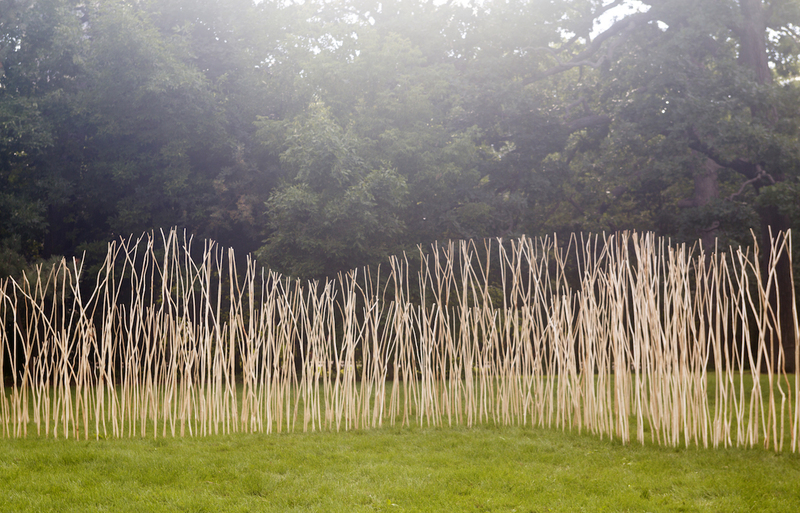
Figure 1
Thomas Ferrella
What Shapes Us 2016
sandbar willow
Courtesy Thomas Ferrella
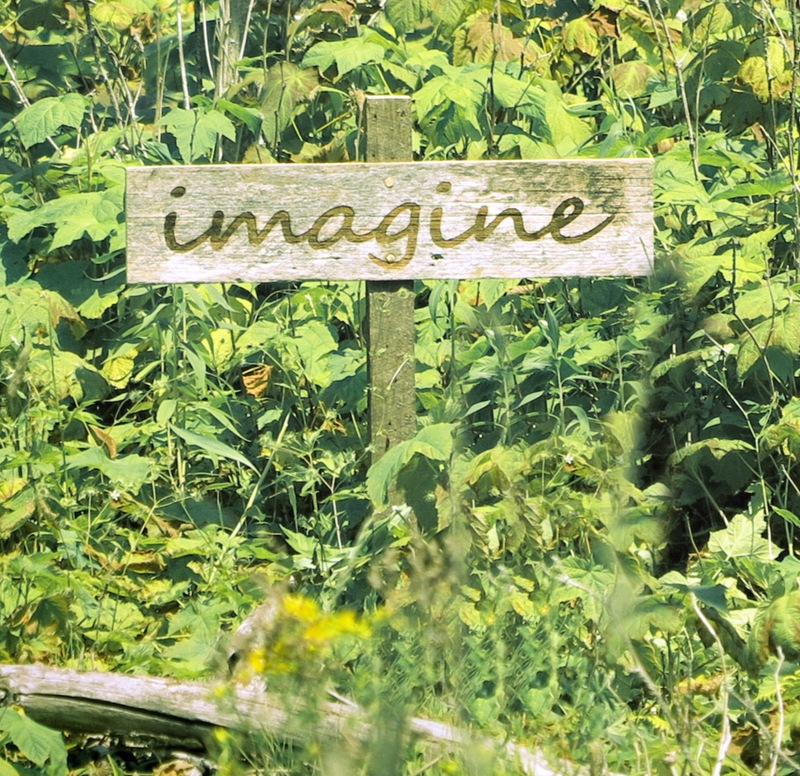
Figure 3
Thomas Ferrella
Imagine from the Drift series
2014-2016
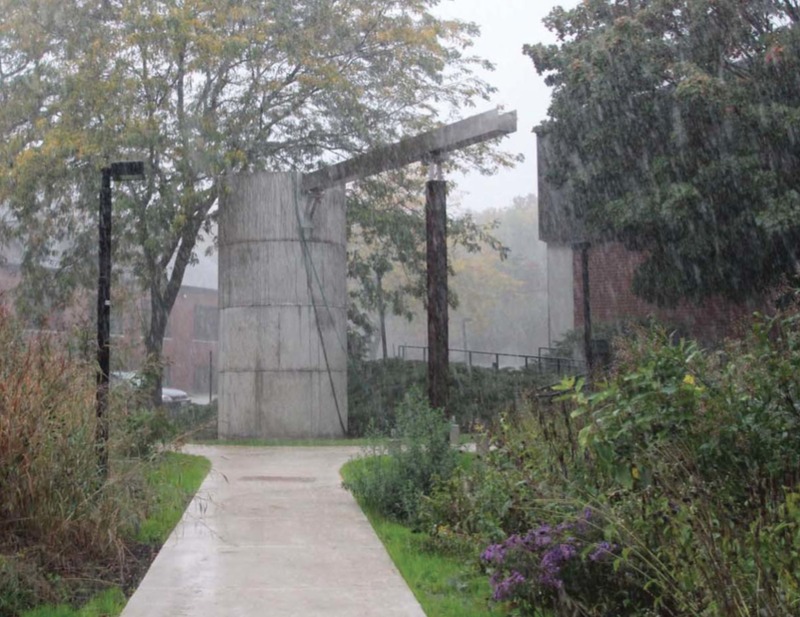
Figure 2
Cistern in the “Spiral Garden”
University of Wisconsin-Milwaukee, 2013
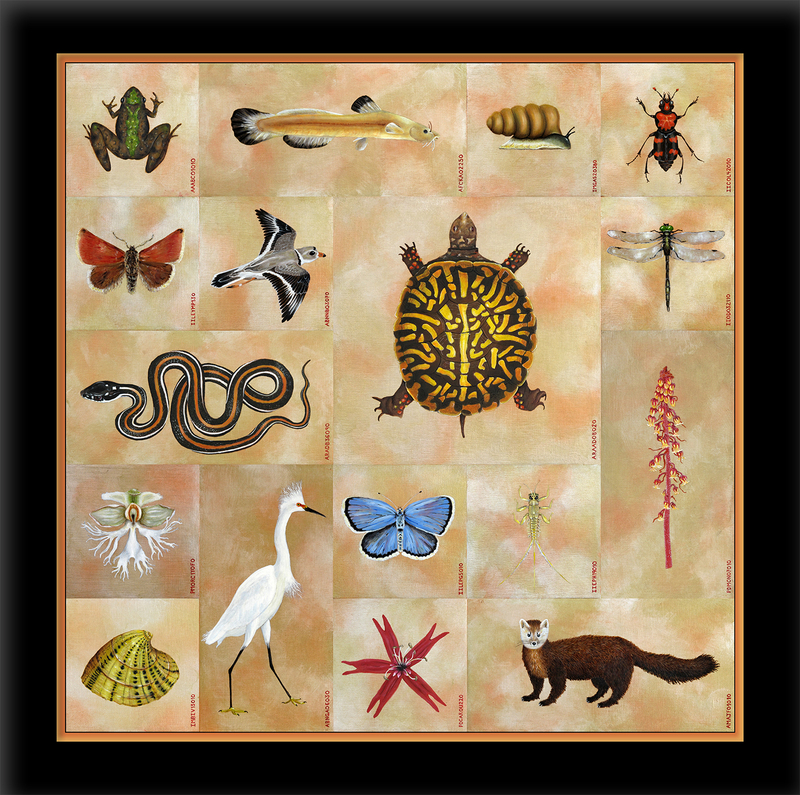
Figure 5
Thomas Ferrella
Endangered Wisconsin
2011
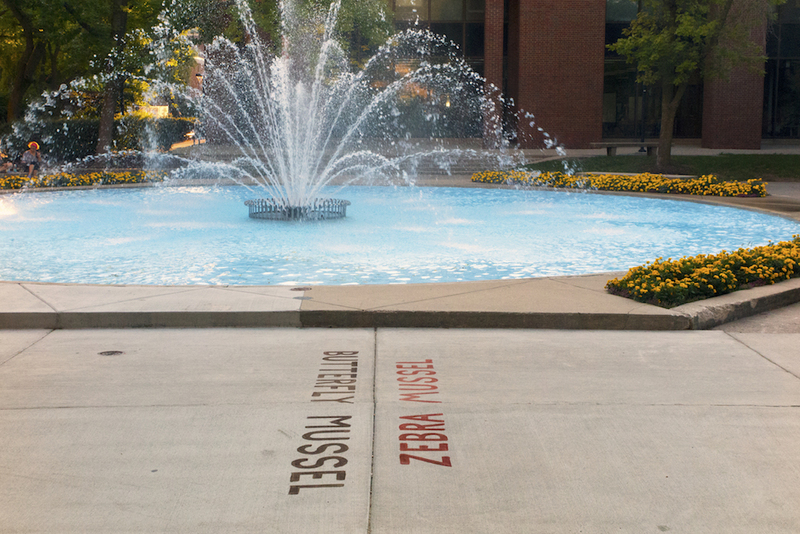
What We Shape 2016
(names of endangered and invasive species written on pathways in biodegradable pigments)
dimensions variable
Temporarily installed on walkways throughout campus.
Courtesy Thomas Ferrella
Ferrella makes eco-art as a reflection on the state of affairs in the environment, and how (to put it mildly) messed up everything is with environmental and climate change receiving little notice. He is profoundly concerned about losing species and natural occurrences, many of which we may never know existed. He is perturbed by the overwhelming attitude that nature is a resource for humans to manipulate and control, a perspective that he asserts has resulted in a lack of clean water and clean air, the rise in cancer rates, autism, new viruses crossing over into humans, and the introduction of invasive species that affect animals, plants and entire eco-systems. Through ECO Ephemeral, he hopes to put a personal touch to those losses that will resonate with viewers.
One example of direct human influence that he cites is the blight resulting from ballast water in ocean-going ships that carried zebra mussels into the Great Lakes. Another is the use of honeysuckle as an ornamental garden plant, only for it to spread and invade forests and choke the indigenous woodland ecosystem. Lyme disease also illustrates human influence turning on itself. Ferrella vehemently condemns the mismanagement of the deer population in Wisconsin, which has allowed unprecedented population growth with few extant natural predators. This system provides deer ticks with an endless blood supply, which keeps the debilitating disease at epidemic proportions in this state. Nonetheless, deer are allowed to propagate at high levels because of the money generated during hunting season.
There is no question that we have sacrificed the health and wellbeing of humans because of policies that do not go far enough to preserve naturally occurring eco-systems. Ferrella notes the huge elevation in the rate of asthma related to air quality, the rise of ozone, the recent Volkswagen debacle, and the use of synthetic products that give off fumes in homes and workplaces. He further comments on the rise of breast cancer, hypertension, obesity, Zika, Ebola, SARS, HIV, and syphilis as byproducts of tampering with the environment. Ferrella acknowledges that his eco-art is influenced in part by his medical career. “You can’t understand these statistics and not believe they are related to our environment.” He also remarks on the hundreds of above ground nuclear bomb tests that were conducted in Nevada and Utah. All of the fallout that blew east over America’s breadbasket coincidently fell on the film set of The Conqueror (1956), staring John Wayne. The director, Dick Powell died of cancer just seven years after the film came out and forty-five other cast and crewmembers died of cancer over the next two decades. Ferrella points out that there are many diseases that seemingly came out of nowhere during the twentieth century, such as Polycystic Ovarian Syndrome. He believes these unpleasant trends are based on how we are treating our environment, food system, animals, and ourselves, and yet collectively we still uphold an attitude of conquering the environment at all costs. He asks, “are we in some perverted way just feeding the health industrial complex?”
The four series that Ferrella presents in this exhibition engage with various UWM sustainability initiatives and larger biological rights issues that potentially affect the world over. Perhaps the most visible installation is What Shapes Us. This is a site-specific installation located along Downer Avenue, in a clearing near Edgewood Avenue.
The installation consists of thin dried Sandbar Willow sticks that pierce the ground in close configurations, forming curves, waves and passageways. This installation is meant to inspire people to think about wind, water and time, and how these factors shape our environment and us. Like mandalas or totems, Ferrella feels that “the use of organic forms unites the viewer with the natural world on a subconscious level.” Pushing this inquiry further, consider what we also shape, how we use our resources and how we could use resources that are more practical or appropriate given issues of sustainability.
The Sandbar Willow used in this installation is a native species that was harvested from southeastern Wisconsin. Although it is indigenous to Wisconsin and is useful in many ways, it can be invasive if it is not properly controlled by grazing fauna, wildfires or through human management. It is used for erosion control but at the same time it can quickly choke streams and interrupt trout pathways and other ecosystems. Native Americans traditionally used it for a wide range of domestic purposes including the construction of homes, sweat lodges and hunting. When freshly cut, the willow sticks are pliable and it is especially satisfying to peel the bark that exudes a subtle refreshing aroma. The moist bark is used in weaving strong basketry and also has medicinal properties. Sandbar Willow is currently a popular material for privacy screens and fences and it is well suited for such commercial products because of its ability to grow rapidly.[i]
At the close of the exhibition, the willow will be removed, leaving small holes that aerate the soil in conjunction with UWM’s natural lawn care practices. UWM Facility Services implements the Natural Lawn Care program through composting, overseeding and aeration without the use of synthetic fertilizer or pesticides.[ii] Ultimately, the grass is more resilient, but more importantly, the program benefits the health of people, pets, insects and microorganisms. It also reduces the nitrates that flow into the Lake Michigan watershed.
In the context of twentieth-century land art, there are some parallels to Ferrella’s willow installations. His ideologies are perhaps most akin to Andy Goldsworthy’s, but one could go as far as to draw out similarities between his work and Michael Heizer’s. Of the artists associated with the Land Art movement, Andrew Brown states:
they were leading the charge of a new avant-garde that would alter radically the way artists viewed and engaged with natural objects and processes. These pioneers showed not only that art could be placed within the environment and be made from it, but also that the art could change that environment forever.[iii]
Unlike many of the artists associated with the Land Art movement, Ferrella has not made an indelible site-specific installation to date, and perhaps never will given his strong considerations towards Manifest Destiny-type attitudes.
Nestled in what is commonly referred to as the “Spiral Garden” between Klotsche Center and the Heating Plant, Ferrella situated a sign that reads, “imagine.” This sign comes from Ferrella’s larger installation series called Drift. Each diminutive, reclaimed lumber sign in the series is engraved with a different single word that can be associated with the location where it is posted. Vondra Engraving, Inc. appreciates the project so much that they engrave the signs gratis.
Ferrella often incorporates text into his art, and has collaborated with poets on several projects, making this work a circuit between his works installed around the campus and the environmentally charged artists’ books in Special Collections. The guerrilla-like placement of these signs is intended to be very informal, often disregarding land ownership or ordinances. At UWM the placement of the sign was vetted, but only one is included in the exhibition, so as to keep with Ferrella’s intentions for the series of solitary units that are far-flung.
Imagine (fig. 3) is especially appropriate for the garden spearheaded by Professor James Wasley in the School of Architecture and Urban Planning, designed in collaboration with landscape architect Gerard Rewolinski and then students Joel Springsteen, Michael Kautzer and Andrew Manto.[iv] Made possible in part by the Milwaukee Metropolitan Sewerage District, the garden was constructed in 2009 to reconnect a small river that had been interrupted by city life. The more prominent feature of the gardens includes two massive cement cisterns that were constructed in 2013, which hold a total of 12,360 gallons of rainwater that is slowly released into the ground after heavy rainfall (fig. 2).[v] One who sees the sign in the Spiral Garden might “imagine” what ecological architecture can accomplish if implemented more widely.
For a brief time, the installation receiving the most foot traffic is What We Shape. These highly ephemeral, organically pigmented stencils bear the names of endangered and invasive species, which disappear with wind and rain. However, it is the foot traffic over the names of the species that evoke the most poignant message of what we shape and what shapes us.
The foundation for Ferrella’s three outdoor installations is his painting entitled Endangered Wisconsin, displayed in the Daniel M. Soref Learning Commons at Golda Meir Library during this exhibition. This painting is a series of seventeen small, individual oil paintings on wood panels. The puzzle-like arrangement is coincidently reminiscent of two of the artists’ books, Julie Chen’s Family Tree and Jody Williams’ Still Sense. The species depicted are: Hine’s Emerald Dragonfly, Midwest Pleistocene Vertigo (snail), Northern Blue Butterfly, Slender Madtom (catfish), Wallace’s Deepwater Mayfly, Western Ribbonsnake, Giant Carrion Beetle, Giant Pinedrops (plant in the blueberry family), Ornate Box Turtle, Piping Plover, Phlox Moth, American Marten, Blanchard’s Cricket Frog, Butterfly Mussel, Eastern Prairie White-fringed Orchid, Fire Pink (wildflower) and the Snowy Egret.
With this painting, Ferrella’s aim is to implement art in order to educate people about the species that are endangered by current environmental land practices. The individual paintings are simple yet realistic, cataloging the species beautifully in order to show us what we are going to potentially lose. What I find especially moving about this painting is that it has made me realize I personally have no idea if or when I encounter endangered species. Could the last Phlox Moth flitter in the light at my door?
[i] United States Department of Agriculture, Natural Resources Conservation Service, Plant Fact Sheet, Sandbar Willow, February 5, 2002, accessed June 22, 2016, https://plants.usda.gov/factsheet/pdf/fs_saex.pdf.
[ii] Nelson and Mone, “Green Ribbon Schools Application,” 9.
[iii] Brown, Art & Ecology Now,12.
[iv] James Wasley, “UWM as a Zero-Discharge Zone: Built Work 2006-2013,” 2013, 32.
[v] Ibid., 44.
